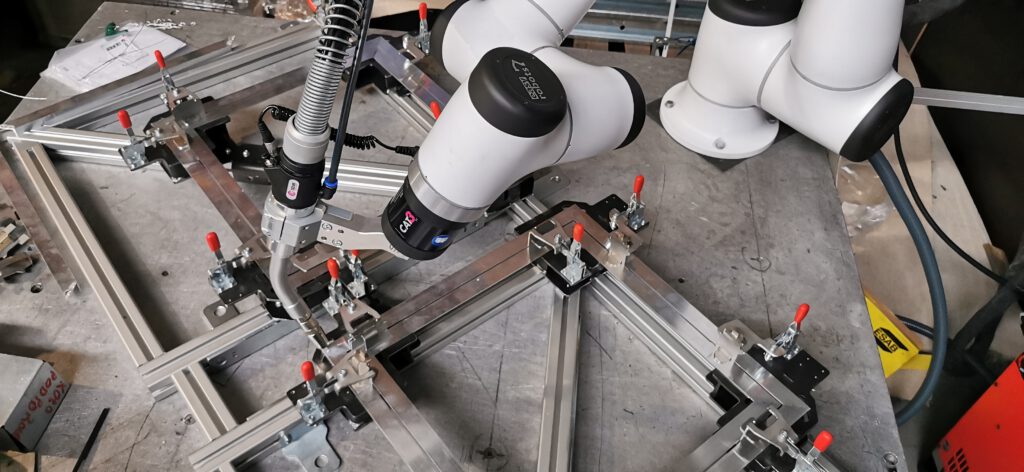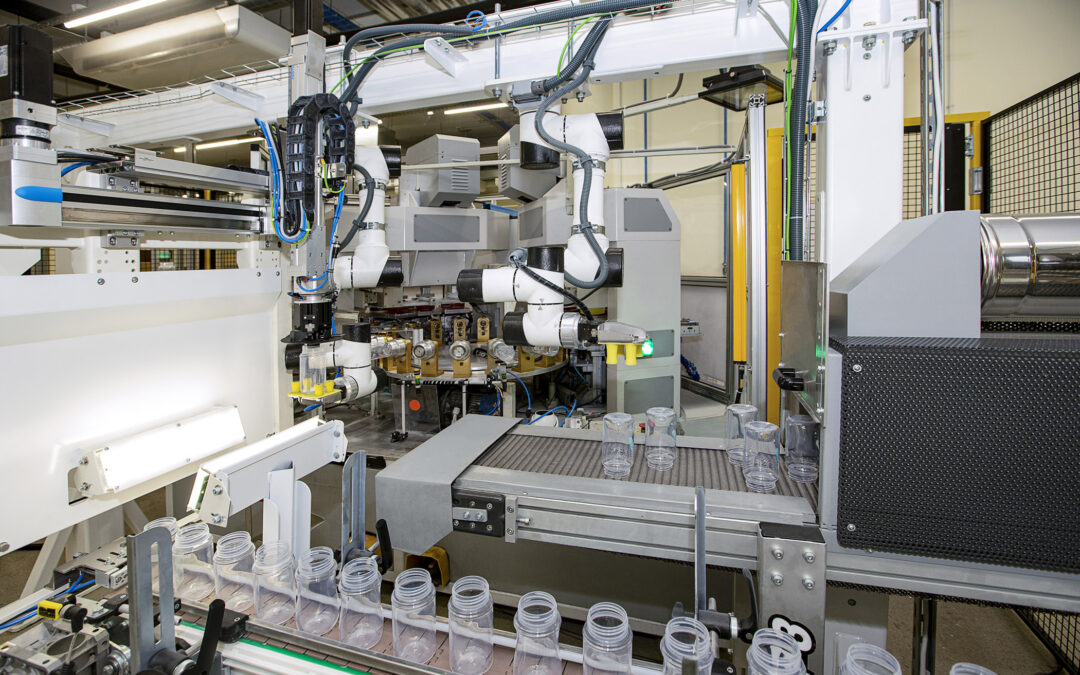How are industrial robots different from other robots?
Industrial robots of various kinds are increasingly appearing in industrial halls. Depending on the tasks they are to perform, they vary in design, functionality and names. What are the differences between the various devices used in factories and when should they be used? It is worth learning more about the capabilities of the various models in order to best match them to your needs and to your production line.
First works
In our culture, robots are humanoid machines that perform similar tasks to humans. Many domestic appliances are called robots, such as the kitchen robot or the mobile hoover, known as a cleaning robot, but the first devices to assist workers on production lines were developed in Ford factories in 1961 (Versatran Model C).
Industrial robots have a longer history than modern humanoid robots. Industrial machines are all about automating the production line as much as possible. Their use relieves people from performing tedious and dangerous tasks. It is therefore worth familiarising yourself with the types of robots that can be found on the production floor.
Breakdown in terms of unit construction
In terms of the design of the kinematic unit, robots are divided into modular and monolithic. In the case of the latter, it is important to have an unchanging mechanism design, which provides greater stability, but also means less flexibility for such a robot. This is why modular models are increasingly chosen today, which provide sufficient stability with current manufacturing technology. At the same time, they retain a great deal of flexibility due to the possibility of changing components (grippers, tools, etc.).
Structural breakdown
Another division concerns the structure, which can be divided into serial, parallel or hybrid. Examples of robots with a serial structure are:
- Cartesian robots - characterised by a rectangular coordinate system and a cuboidal motion space. This is the space that is used the most.
- Cylindrical robots - space is defined by two linear dimensions (surface) and one polar dimension.
- Spherical robots - usually have two rotating motion units. The working space is defined by the polar dimensions, i.e. the upward, downward and lateral pivoting of the robot arm.
- SCARA (Selectively Compliant Assembly Robot Arm) robots - have three parallel axes, two of which perform rotary motion and one of which performs progressive motion. This type of robot is often used on process lines assembling components and subassemblies.
- Articulated robots – dość ciekawym rozwiązaniem są roboty antropomorficzne, które mają trzy osie obrotowe. Są one niezastąpione zwłaszcza przy montażu, polerowaniu oraz lakierowaniu detali. Innym rozwiązaniem są roboty z równoległą strukturą kinematyczną, posiadające ramiona sterujące platformą. Oba te warianty są bardziej zaawansowane technologicznie i mają często dodatkowe stopnie swobody, aby ułatwić trudne do wykonania operacje.
Cobots
Collaborative robots have more extensive safety features, allowing them to share a work area with humans. They are characterised by their lightweight design and ease of use, and are very flexible in the tasks they perform.
It is also important to note that the number of degrees of freedom (i.e. joints) used in the cobot corresponds to a human arm. This facilitates control and makes it possible to perform tasks previously reserved only for humans. For more information on these interesting machines, see our other article "Cobot or no cobot?„
Welding robots
A separate group of robots are welding robots. These have wires routed along the robot arm to keep them out of the way - this prevents collisions and makes programming the robot easier.

Industrial welding robots feature a slim design that makes it easy to reach hard-to-reach areas. They also have a welding trajectory compensation function, making it easier to follow the welding path to better match the actual position of the parts. This is so important because distortion of individual components can occur during operation, and even a slight misalignment often results in an ineffective weld.
Industrial robots
Currently, industrial robots - lightweight, adaptable and highly precise robots - are also increasingly used. They are used to rotate and position parts on a production belt or in a work area, and support work on assembly and production lines. In the first developments of this type, the operator's muscle power was the driving force, but nowadays it is a modern drive.
Service Robots
In addition to the broad group of industrial robots, there are also service robots. How do we define them? These are devices that do work that helps people, but not in an industrial setting - intelligent hoovers or kitchen robots could be included in this group. In the future, robots that help find the desired item in a large hypermarket or cleaning robots in banks and hotels may also join this group.
Industrial robots Instead, they remain on the shop floor, by the production belts. Their numbers continue to grow, with the main advantage being that they are much more refined than their service counterparts. This is primarily due to the gains made by automating production lines. Even small robots have been worth investing in to speed up production and reduce costs. This has allowed industrial machinery to slowly evolve to the state we have today. In the case of service robots, customers expect an immediately mature, fully functional robot. This means that service machines have to draw a lot from industrial machines in terms of operation and functioning.
Also, the operation of service robots is hampered by the fact that they do not have a confined, human-free working area and therefore have to comply with more stringent safety requirements. It was only with the introduction of artificial intelligence and 3D vision technology that fully functional service robots became possible. In recent years, they have increasingly appeared in the offerings of various companies.
A world full of robots
There is a plethora of robots in the reality around us. The vast majority of them work inside production halls, making them unnoticeable on a daily basis. However, their rapid development over the past decades has enabled the creation of service robots; while new technologies have facilitated the implementation of these machines in homes. It is worth remembering, however, that the first functional robots appeared in industry. There, they developed over a long period of time, so that today a variety of industrial robots are available, with different functions and capabilities.

